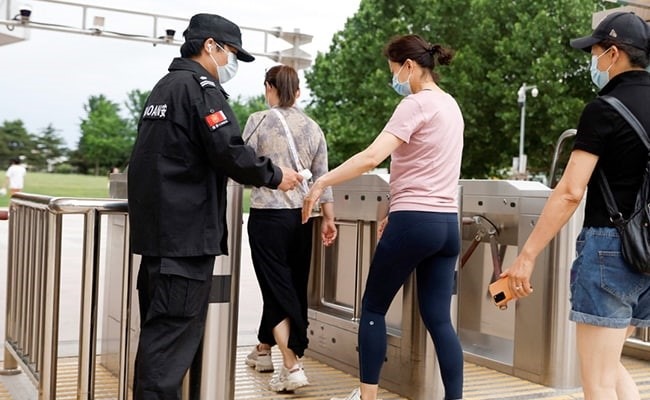| Translate This News In |
|---|
Beijing’s streets were busier on Monday as people in two districts were permitted to return to work, while Shanghai moved closer to lifting its two-month-old Covid-19 shutdown on Wednesday, as the number of infections in China fell.
China is the only major country following an uncompromising “zero COVID” strategy aimed at eradicating breakouts at any cost, while the rest of the globe seeks to coexist with the virus.
In comparison, several Western countries record tens of thousands of new COVID cases per day.
The tight COVID restrictions, particularly on China’s most populated city, have hammered the world’s second-largest economy, disrupting global supply chains and international trade.
However, there may be some relief shortly.
In the capital Beijing, the districts of Fangshan and Shunyi lifted work-from-home restrictions, while public transportation reopened in the two districts as well as the city’s largest, Chaoyang.
Libraries, museums, theatres, and gyms were allowed to reopen on Sunday, though with restrictions on the amount of individuals allowed, in regions where there had been no community COVID cases for seven days. Restaurant dining is still prohibited across the city.
Shanghai, China’s commercial capital of 25 million people, expects to break a gruelling two-month lockdown on Wednesday, but there is still much uncertainty about what the exit will look like and how gradual it will be.
Businesses have been told they can resume operations, but most residents have not been notified when they can leave their housing compounds, much public transportation has been banned, and no private automobiles are allowed on the roadways without prior consent.
A banker at a foreign institution in Shanghai said the human resource and logistics departments had informed staff that management was still unsure whether people could return to work on Wednesday.
Nothing is obvious, and neither is the bank,” the banker stated, declining to reveal their name.
Shanghai authorities unveiled 50 policy steps to help the economy on Sunday, saying they will eliminate “unreasonable” obstacles for enterprises to start operations on Wednesday.
The initiatives include hastening the issue and usage of local government bonds, requesting that banks renew loans to small and medium-sized businesses, and hastening the approval of real estate projects. To encourage auto consumption, the city would also lower some passenger car purchase taxes.
There were no specifics on which business limitations would be lifted.
“Let’s only speak about returning to work when we can freely enter and exit our housing compounds,” one social media user said in response to a local media report about the latest Shanghai measures.
Sensitivity
While there are evidence that activity levels have rebounded considerably from April’s lows, the strength and longevity of any bounce is heavily dependent on COVID developments.
Although Shanghai, Beijing, and other Chinese cities have made substantial progress in reducing daily caseloads, uncertainty remains high due to the highly transmissible Omicron variant’s proclivity to resurface.
The zero COVID approach is President Xi Jinping’s trademark initiative, and he is generally anticipated to achieve a record-breaking third term this autumn.
Chinese authorities have recently stepped up their support for the approach, claiming that it is saving lives and threatening action against opponents who indicate that an escape strategy is not imminent.
According to Goldman Sachs analysts, they were only able to mention China’s zero COVID policy in one of more than ten recent meetings with clients in Beijing, “possibly because to its political sensitivity.”
It will be critical for China to avoid another Shanghai-style shutdown, particularly in a major population centre and industrial hub, and authorities are hopeful that periodic mass testing of people will allow them to detect breakouts early.
In its major cities, China wants to have COVID testing facilities within 15 minutes’ walk of everyone.
According to analysts, the Chinese government is on track to spend more than $52 billion this year on testing, new medical facilities, monitoring equipment, and other anti-COVID efforts that will benefit up to 3,000 enterprises.
For May 29, Shanghai reported fewer than 100 new COVID cases, while Beijing reported 12. China recorded 184 new cases across the country, down from 293.


















